by Laurie Osgood | Jun 11, 2017
Staying Healthy At Summer Camp – 7 Keys to a Healthy Camp Counselor Experience
It’s getting hot outside and that means summer camps are heating up! Being a camp counselor is a fun summer job and it’s a great way to learn leadership skills. As a camp counselor, it is your job to take care of the children that are under your supervision, but your own health and well-being is as important as the campers. If you’re not healthy, you won’t be able to properly care for the campers.

Here are 7 keys to staying healthy throughout your summer at camp:
- DRINK PLENTY OF WATER : When working outside in the summertime, it is essential for you and your campers to stay hydrated and avoid developing heat-related illnesses. The Center for Disease Control (CDC) https://www.cdc.gov/nutrition/data-statistics/plain-water-the-healthier-choice.html recommends between 6 to 8 glasses of water daily for good hydration. However, the amount of water that your body needs should be based on your individual need. Some of the symptoms of dehydration are: Mouth Dryness, Fatigue, Headache, Lightheadedness, Dizziness and Thirst. If you or a child in camp shows signs of any or all of these symptoms, immediately seek medical attention
- GET SOME SLEEP: Everyone feels a lot better after a good night’s sleep. One of the most critical threats to wellness for camp staff members is sleep deprivation. It’s easy to burn the candle at both ends when you’re working at a summer camp. Try to stick to your normal bedtime whenever possible. Routine is important for a good night’s sleep!
- EAT HEALTHY: During the hectic pace of summer camp, it is easy to forget to eat properly. What you eat can determine how well your body is fueled and how efficiently it functions. The MyPlate https://www.choosemyplate.gov/MyPlate guidelines call for making half your plate fruits and vegetables as part of a balanced meal. Eating a balanced diet is important for good health and increased energy, especially when working with campers.
- HANDWASHING & FOOD SAFETY: Bacteria and germs are hiding anywhere: in your kitchen, on your plate and even on your hands! It is important to wash your hands and hard surfaces often. Make sure to wash your hands with soap and warm water for 20 seconds before and after handling food. Foodborne bacteria can’t be seen, smelled or tasted, but they can make you sick! Therefore it is important to practice good food safety and food preparation practices. When in Doubt, Throw it out!
- SUN SAFETY: While enjoying the sun and outdoors, protect yourself from overexposure to sunlight by wearing a hat and using sunscreens. Severe sun burns (also known as sun poisoning) can also lead to extreme dehydration for you and your campers. Applying a broad-spectrum sunscreen (UVA/UVB), and re-applying every 2 hours or after swimming will help prevent a sunburn. As a camp counselor, you should remind kids to play in shaded areas to reduce their exposure to UV rays, especially between the hours of 10 AM and 4 PM, when the sun’s UV rays are at their peak.
- BUGS AND TICK BITE PREVENTION: Bugs and summer go together. To avoid getting bug bites, you should apply insect repellant that contains DEET to exposed skin, and wear long sleeves, pants, and other light-colored clothing. Campers should also try to avoid areas where ticks can be found, such as high grass and wooded areas. Campers should check for ticks every day, and remove them right away. Tick bites can lead to Lyme disease, which is particularly dangerous in the summer.
- STRESS MANAGEMENT: Stress can occur when we feel overloaded or under pressure in a demanding situation. Stress is a common problem among camp counselors. Managing your stress level is just as important as maintaining your physical health. Even though stress can be uncomfortable, it’s not always a bad thing, some stress can be a good thing and can help us better handle difficult situations.
As a camp counselor it is vital that you learn to relax, eat right, stay hydrated, and make sleep a priority, wash your hands, protect yourself from the sun, and take care of yourself!
Extension is a great resource for tips to stay healthy during the summer. You can find fact sheets and more information in our Electronic Data Information Source (EDIS) publications: http://edis.ifas.ufl.edu/
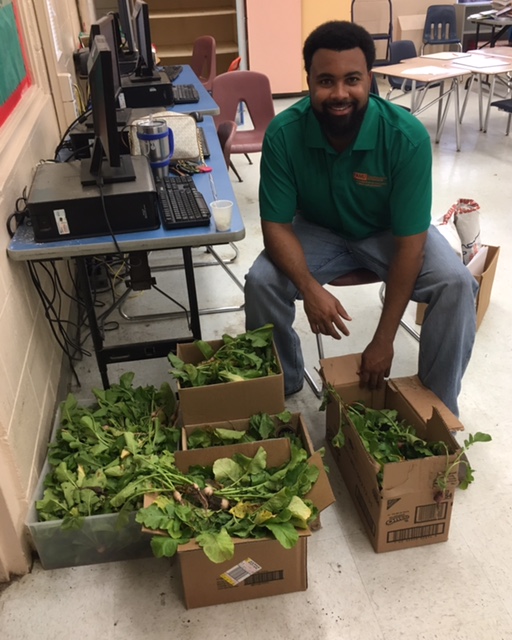
by Laurie Osgood | May 23, 2017
Radishes are an easy vegetable to grow in North Florida, and in the Spring, there is an abundance of radishes in our gardens. So, what do you do with all those radishes?
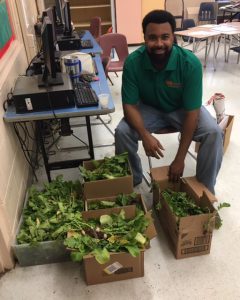 Radishes are a fast growing vegetable that can grow from a seed to a plant in less than 30 days. Radishes are a root vegetable belonging to the Brassicaceae (mustard or cabbage) family. Radishes vary in size, taste, and color. Radishes can be eaten raw, oven roasted, or pickled. The length of time radishes are allowed to grow affects their taste. The longer they are in the ground, the spicier they become.
Radishes are a fast growing vegetable that can grow from a seed to a plant in less than 30 days. Radishes are a root vegetable belonging to the Brassicaceae (mustard or cabbage) family. Radishes vary in size, taste, and color. Radishes can be eaten raw, oven roasted, or pickled. The length of time radishes are allowed to grow affects their taste. The longer they are in the ground, the spicier they become.
Radishes contain only 19 calories per serving, are high in vitamin C, and contain other important nutrients such as folate, potassium, and fiber. According to the Centers for Disease Control, eating vegetables like radishes may help reduce the risk of many diseases, including heart disease, high blood pressure, and some cancers.
Radishes add color, flavor, and texture to coleslaws, salads, and side dishes. When oven roasting root vegetables like radishes, their natural sugars are released, bringing out their sweet, nutty flavors!
Here is a light and flavorful coleslaw recipe for all of those freshly picked radishes. Adding granny smith apples and thinly sliced radishes to traditional coleslaw makes it sweet, peppery, and delicious!
|
Cabbage, Apple, and Radish Coleslaw
Serves: 8 Prep Time: 10 minutes
|
| INGREDIENTS:
5 cups of shredded cabbage, red or green
1 cup granny smith Apples, cut into small pieces
¾ cup radish, cut into small pieces
2 tablespoons white onions, diced
DRESSING:
¼ cup sugar
¼ cup cider vinegar
1.5 tablespoons water
1.5 tablespoons oil
1/8 teaspoon celery seed
1/8 teaspoon dry mustard
A pinch of salt and pepper
INSTRUCTIONS:
Mix cabbage, radishes, apples, and onions in large mixing bowl.
In smaller bowl, combine sugar, vinegar, water, oil, mustard, celery seed, and salt and pepper, and mix well.
Add dressing to cabbage mix and stir well. Place in refrigerator and chill for 30 minutes before serving. |
To learn more about Radishes, visit the FDACS website at: http://www.freshfromflorida.com/content/search?SearchText=radishes
Cabbage, Radish, Apple Coleslaw recipe courtesy of Blackberrybabe.com: blackberrybabe.com/2016/05/23/cabbage-radish-apple-cole-slaw/
To learn more about Chronic Disease Prevention and Health Promotion, visit the CDC Website at https://www.cdc.gov/chronicdisease/
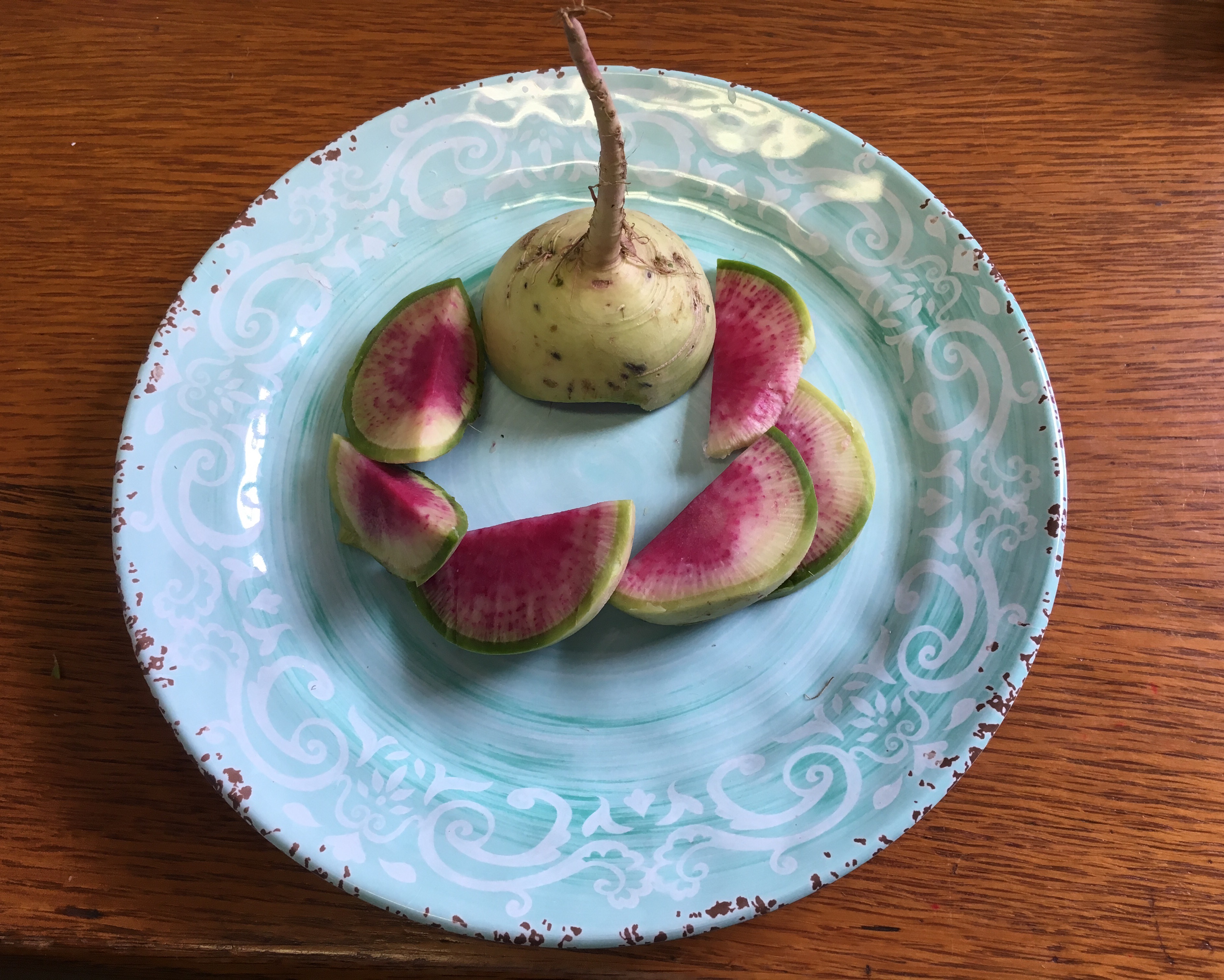
by Laurie Osgood | May 10, 2017
The watermelon radish is a member of the mustard family, which includes arugula, broccoli, and turnips. It has an edible round white root with a green stem and leaves. The inside flesh is rimmed in white with a dark pink circular pattern, resembling a watermelon, and is crisp and sweet, with a mild peppery taste.
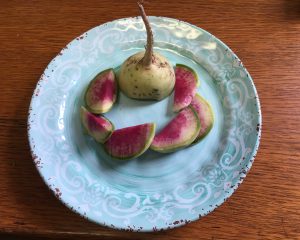
SEASONS/AVAILABILITY
Watermelon radishes are as easy to grow as other radish varieties and can be ordered through online seed catalogs. However, they may take longer to mature than other types of radishes (about 65 days). They are available all year long, with peak growing seasons in the spring and late fall. High temperatures and warm soil can have an effect on the radish’s flavor, making the fruit taste bitter.
NUTRITIONAL VALUE
The fruit, root, and leaves of the watermelon radish provide an excellent source of fiber, vitamin C, and other nutrients, particularly when eaten raw.
SELECTING AND SERVING
When shopping for watermelon radishes, select those that are firm, without bruises or cracks. Watermelon radishes can be served fresh or cooked, hot or cold. Cooking the watermelon radish will enhance its natural sweetness. This fruit’s vibrant color is perfect for topping salads and sandwiches. Watermelon radishes are delicious when pickled.
PICKLED WATERMELON RADISHES
- 1 to 2 watermelon radishes
- ½ cup distilled white vinegar
- ½ cup water
- 1 teaspoon sugar
- 1 teaspoon salt
- ½ teaspoon peppercorns, lightly crushed
- 2 cloves garlic, peeled
- Thoroughly wash radishes, slice into ½ inch-thick discs, and place into clean canning jar.
- In a medium saucepan, bring vinegar, water, sugar, salt, peppercorns, and garlic to boil. Simmer one minute. Pour hot liquid over radishes in canning jar.
- Let cool to room temperature, top with canning lid, and store in the refrigerator.
Yield: 1 cup
The watermelon radish is a low maintenance, easy to grow plant. Only a basic level of care is required to ensure that it thrives. Taking care of its basic growing needs (soil, sun, and water) will result in a strong plant that will make a vibrant and healthy addition to your summer recipes.

by Laurie Osgood | May 3, 2017

Mother’s Day is Sunday, May 14, 2017, and it is a great time for us to celebrate our hard-working mothers. It is also a good time to talk to your mother about her health history. Knowing your mother’s health history may help improve your own health.
According to the Centers for Disease Control (CDC), a family health history is a record of the diseases and health conditions in your family. They advise you to collect information about your entire family, including any major medical conditions so you can provide your doctor with an accurate picture of your family’s health history and genetics.
8 IMPORTANT QUESTIONS TO ASK YOUR MOTHER:
- HOW’S YOUR HEART? According to the American Heart Association, heart disease is the number one killer of women, and the genetic risk is high. Although you probably know if your mother has had a heart attack in her lifetime, you may not know if other family members have suffered from high blood pressure or heart disease.
- HAVE YOU EVER HAD CANCER? It is important to know if your mother or anyone in her family has had a cancer diagnosis, but it is also essential to know what type of cancer, when it occurred, and what type of treatment was required for their cancer. This will help your doctor determine when to suggest certain screenings.
- DO YOU HAVE ANY HISTORY OF TYPE 2 DIABETES? Type 2 diabetes is one of the diseases that can be passed down to you from your mother. If your mother has ever been diagnosed with diabetes, that information must be included in your medical history.
- WHAT WAS YOUR PREGNANCY LIKE? Pregnancy-related conditions like gestational diabetes, pre-eclampsia, and fertility issues can be inherited.
- WHAT WAS MENOPAUSE LIKE? Daughters can expect to reach menopause around the same time as their mother did. Some of the symptoms of menopause can be difficulty sleeping and hot flashes. These symptoms can be eased with foods rich in Omega 3s, such as fish oil, walnuts, seafood, and spinach.
- HAVE YOU EXPERIENCED ANY MENTAL HEALTH DIFFICULTIES? Mental health issues can be inherited as well, so this information should be included in your family history.
- HAVE YOU EVER HAD EYE PROBLEMS? Glaucoma is a disease that may typically appear in older adults. Heredity is known to play a key role in all types of glaucoma.
- DO YOU HAVE OSTEOPOROSIS SYMPTOMS? A family history of bone density problems can indicate your own chances of developing osteoporosis or other bone difficulties as you get older.
Conversations about health can be particularly difficult between parents and children, as they are not the normal topic of conversation on Mother’s Day. However, knowing your mother’s health history can help you take better care of yourself and can be an opportunity to improve the health of the next generation in your own family.
Resource: https://www.cdc.gov/features/familyhealthhistory/index.html

by Laurie Osgood | Mar 13, 2017
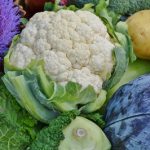 Looking for a colorful and fresh side dish? Then you should try roasting your vegetables! Roasted vegetables are quick, easy, and flavorful. When roasted, vegetables become brown and crisp on the outside, making their natural sugars caramelize. This caramelization process makes the vegetables sweet and full of flavor. An added bonus of roasting your vegetables is that they require very little prep time.
Looking for a colorful and fresh side dish? Then you should try roasting your vegetables! Roasted vegetables are quick, easy, and flavorful. When roasted, vegetables become brown and crisp on the outside, making their natural sugars caramelize. This caramelization process makes the vegetables sweet and full of flavor. An added bonus of roasting your vegetables is that they require very little prep time.
Vegetables are an important part of our diet. The US Dietary Guidelines recommend that fruits and vegetables fill half our plate (USDA, 2015). Vegetables are packed with vitamins, minerals, and fiber, and are low in calories.
SOME SEASONAL VEGETABLES THAT ARE DELICIOUS WHEN ROASTED:
- Whole Cauliflower: Pull all the leaves off and remove part of the core. Add 1 tbsp. of olive oil into a pan, add the whole cauliflower, cut side down, and add salt and pepper. Roast at 400ºF for 45 minutes to an hour, until well-browned on the outside.
- Asparagus: Trim off the tough ends and put the spears in a pan with 1 tbsp. olive oil, salt, and pepper. Roast at 400ºF for 10-15 minutes, depending on thickness.
- Green Beans: Just like the asparagus. Trim off the tips, toss with 1 tbsp. olive oil, salt, and pepper. Add to pan, and roast at 400ºF for 15 minutes.
- Broccoli: Trim off the leaves and cut up into florets. Add 1 tbsp. olive oil, salt, and pepper. Roast at 400ºF for 35 minutes. When roasting broccoli, the florets will end up singed a bit, but the stalks will become soft, sweet, and delicious.
- Carrots: Peel carrots; cook them whole or split in half lengthwise. Add 1 tbsp. olive oil, salt, and pepper. Roast at 400ºF for 30-40 minutes.
- Brussels sprouts: Trim off the ends, toss with 1 tbsp. olive oil, salt, and pepper, and roast at 425ºF for 40 minutes. The sprouts will be crispy and wonderful when roasted.
Resources:
2015–2020 Dietary Guidelines for Americans: https://health.gov/dietaryguidelines/2015/
Florida Department of Agriculture and Consumer Services, Fresh from Florida website http://www.freshfromflorida.com/Food-Nutrition/Buy-Fresh-From-Florida









